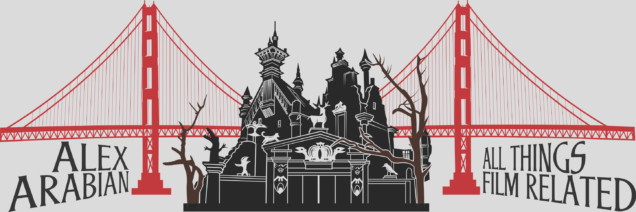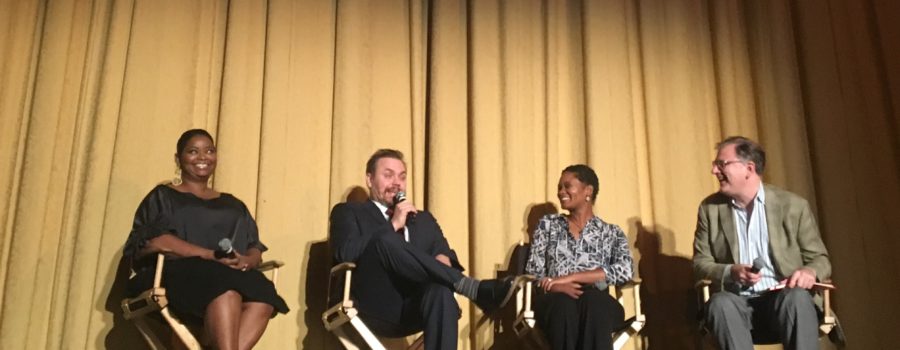It was another successful, creatively stimulating, and star-studded event put on by the San Francisco Film Society (SFFS) on December 17, 2016. Executive Director of the SFFS Noah Cowan, as always, did an excellent job, along with the tireless efforts of the staff, to organize this event and moderate and facilitate the Q and A, topics of which included the blurred intersection between racism and misogyny, handling stardom, philosophically breaking down the myth of the celebrity, and the parabolic formulas and Euclidean geometry that were integral in writing the trajectory equations for putting John Glenn into orbit, explained eloquently by NASA Scientist Tracy Drain.
Two days after attending a private screening of her new film, “Hidden Figures” at the White House for President Barack Obama and First Lady Michelle Obama, Octavia Spencer found herself at the Castro Theater to co-accept the Sloan Science in Cinema Prize along with the film’s director, Theodore Melfi, presented by the Sloan Foundation, which has given grants to a world-record 48 eventual Nobel Prize winners, partnering with the San Francisco Film Society. Though she had to have been exhausted from traveling all over the country, she didn’t appear to be; she looked stunning, and her characteristically infectious, joyful personality was on full display.

After Melfi and Spencer accepted the prestigious annual award, the lights went out, and the film screening ensued. The film centers on Katherine Johnson (Taraji P. Henson), Dorothy Vaughan (Octavia Spencer), and Mary Jackson (Janelle Monáe). Mary Jackson fought enduringly through racial segregation laws to become the first female engineer at NASA, Dorothy Vaughan became the first African-American woman to be a supervisor in the aerodynamic computing rooms of NASA, and Katherine Johnson almost single-handedly launched John Glenn into space, then saved his life to get him down safely with the right trajectory recalculations after technical rocket issues forced him to land four orbits earlier than planned. She did this despite being systematically oppressed by her peers in the workplace. Among them, the most loathsome is Paul Stafford, who refused to include her name on her trajectory reports that she authored. Katherine went on to be a vital part in the Apollo 11 Mission, which launched the first human beings, Neil Armstrong and Buzz Aldrin, to the moon. At the age of 97, President Obama gave her the Presidential Medal of Honor for her life’s work.
Taraji P. Henson continues to expand her acting abilities to seemingly endless heights. There is nothing this actor can not do. I have been following her career’s evolution since John Singleton’s “Baby Boy”, and it has been a pleasure to watch. She and Spencer have a handful of scenes that are so emotionally resonant, many of which contain standing up for their basic human and civil rights, they shattered the San Francisco audience to its core, and had many standing up cheering. The standout scene for Henson is when her character, Katherine, explains to her boss, Al Harrison (Kevin Costner), where she goes everyday for extended periods at a time after he has an angry fit. Unfiltered, honest emotions surface on Henson’s expressive face as she explains that the only colored bathroom is half a mile away. Appalled at this information, this prompts Harrison to take down both the colored signs and white signs over the bathrooms, eliminating segregated bathrooms at NASA.
Director Melfi made sure to focus on these strong women’s personal lives, and give perspective to the audience how much they had to juggle and sacrifice. It was essential that he displayed these historical women as three-dimensional characters, and that real social issues reflecting the time period were shown through an unflinching lens.
He wanted to portray racism as it was and still is today: an unconscious prejudice. There is a scene in which Dorothy (Spencer), confronts her supervisor Vivian (Kirsten Dunst). Vivian says, “You know, I really do have nothing against y’all”, to which Dorothy replies, “I’m sure you believe that.” Melfi is confronting a deep-rooted kind of racism that permeates our society. Many prejudice people truly believe they are not racist. As Melfi explained, this film is for anyone who has felt ostracized, experienced this unconscious isolation, or had their endeavors overlooked and disregarded.
“Hidden” in the title, according to Melfi, not only refers to the African-American women behind-the-scenes who were imperative in helping NASA achieve their goals, yet were shamefully overlooked for so long, but it also refers to the missing information that Katherine had to work around. Paul demanded that his calculations be redacted, citing that she did not have clearance for a reason, but, in reality, he really just could not get his mind around the fact that an African American was woman not only working with him, but surpassing him in talent and value. “Figures” refers to the dated term often used as a synonym for the female body, and doubles as a nod to the mathematical dexterity of the equations the women used to help Mr. Glenn get to space and return home.

At first glance, the score might seem like it was composed by the most unlikely of duos: Pharrell, innovative musician and pop artist, and Hans Zimmer, classically trained composer known for “The Pirates of the Caribbean” and “The Dark Knight” trilogy. Together, they produce a magical score that hybridizes contemporary pop, rock, hip-hop, and R&B, with old jazzy tunes that channel Miles Davis and John Coltrane and will leave you trying to hold your legs down from tapping your shoes to the beats and rhythms. As it turns out, Pharrell and Hans Zimmer have been very close friends for 5 years, according to Melfi, explaining their synchronous professional chemistry.
“Hidden Figures” is absolutely essential viewing. It does not matter who you voted for during the election or what your attitude is towards race. Anybody in the world, especially Americans, should see this film for the sole reason that it shows a part of history that has been tragically overlooked and willfully oppressed until now. It tells the story of the historically disenfranchised, and how they overcame suffocating adversity and exceeded their goals. As Katherine said at the end of the film when Harrison asks if she wants to go to the moon right after they successfully launched Glenn in orbit, “We’re already there.” This metaphor stuck with me, that the human spirit can overcome so much abuse, that being an African American, female employee at NASA could be as difficult flying to the moon. But these women, along with many others, paved paths for more women and minorities to break institutional, oppressive barriers in the future.
At the end of one of the worst years in United States history, it is a refreshing, uplifting, and crowd-pleasing viewing experience that everyone not only could use, but should take the opportunity to watch their story onscreen. Spencer explained that it was truly a labor of love, as none of the actors, including the bigger names in the industry, got big pay checks.
I give immense credit to the actors, Melfi, his co-screenwriter Allison Schroeder, and Margot Lee Shetterly for writing the book upon which this film is based. Collectively, they are bringing this heroic and necessary true story to the masses. Not even NASA scientist Tracy Drain knew the story of these women until this book and film came out, and she’s worked there for over 20 years. During this critical time, when the United States is at risk for reversing at least the last 60 years of social and civil rights equality progress, this film serves as a statement that the historically oppressed, disenfranchised, discriminated against, and disregarded will not take a step backwards; it strengthens the roots of those that fight for their inherent rights that grasp far deeper into the ground than the those who posses the ideals of societal, institutional racism.
“You cannot be what you cannot see.” Those were the words of Marie Wilson, founder of The White House Project, which is a foundation aimed to ensure women get equal opportunities in the workplace across all industries, public and private sectors alike. I hope that the indelible words of this quote become engrained in our society, and that they may encourage more people to be the next “first”. Come Academy Awards season, I have no doubt that “Hidden Figures”‘s stamp will be firmly planted on the voting ballots.








3 Comments
Leave your reply.